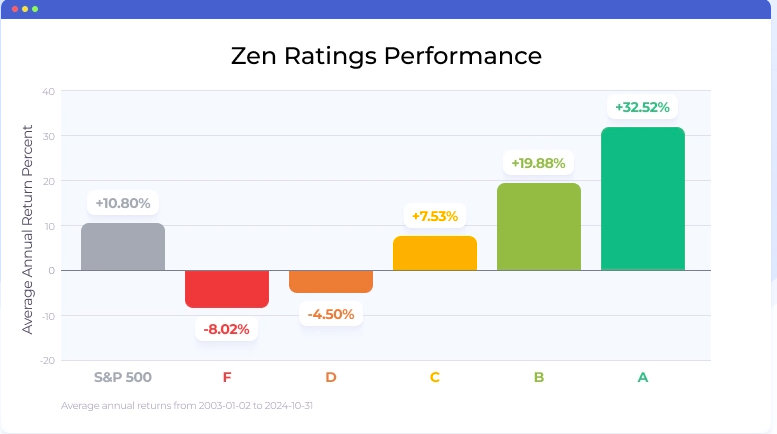Top 10 Tips On Pricing And Costing Of Ai Stock Analysing Trading Platforms
It is important to assess the cost and pricing of AI trading platforms which predict or analyze stock prices. This can help you avoid hidden costs or expenses. Understanding the pricing structure is important for making an informed decision. Here are the top 10 suggestions to evaluate the cost and pricing of these platforms:
1. Understanding Pricing Model
Subscription: Make sure you determine if the platform charges fees per year or month and what's included in each tier.
Pay-per use: Check if you are charged according to the use of the platform (e.g. number of transactions or data requests).
Freemium Model: Check to see if the website offers a free version that offers limited options. Premium features are billed for.
2. Compare Pricing Tiers
Check out the features included in each price tier.
Scalability - Be sure that the pricing levels you choose to use are in line with your requirements.
Upgrade flexibility: Check if you can easily upgrade or downgrade your plan if your requirements change.
3. Evaluate Hidden Costs
Data fees: Make sure to check whether there are additional fees for data that is premium (e.g. real-time data or advanced analytics).
Brokerage fees: Find out if the platform charges additional fees for trade execution or integration with brokers.
API use. Examine if additional charges result from API access, or for frequent API use.
4. Test out free demos as well as trials
Trial period: Look for websites that provide a free trial or demo so that you can test their features before committing.
Trial limitations: Check whether the trial you are using is included in all features or is limited in terms of functionality.
If the platform is not right for you, make sure you can cancel the trial.
5. Check for discounts and promotional deals
Discounts on annual plans: Check if there are any discounts offered by the platform compared to the monthly plans they offer.
Referral programs - See if there are any discounts or credits that you can use to refer new users.
Prices for institutions In the event that you are part of a company that is larger, ask about bulk pricing or institutional pricing.
6. How do you assess return on Investment (ROI).
Cost vs. Value: Determine whether the functions and projections of the platform justify the cost. Does it help you save time or assist you in making better decisions in trading?
Performance track record: Look at the platform's rates of success or user feedback to determine the ROI potential.
Costs of other platforms: Compare the costs of the platform to the possible cost of not utilizing it (e.g. missing opportunities, time spent on manual analysis).
Review the Policies for Cancellation/Refund and Review
You can end your subscription at any time, without incurring penalties or fees.
Refund policy: Check whether the platform allows refunds for unutilised portions of your subscription.
Auto-renewal Check to determine whether your subscription renews automatically and also learn how to choose to stop it.
8. Pricing should be transparent
Clear pricing page - Make sure there are no hidden fees on the pricing page.
Customer support: Contact customer service to clarify any pricing issues or costs.
Contract Terms: Read the contract's terms carefully to determine whether there are penalties or obligations over the long term.
9. Compare with Competitors
Comparing features and prices between platforms is a great way to ensure that you're getting a good deal.
User reviews: Study reviews from users to determine whether other users think the platform is worth the investment.
Examine the positioning on the market for the platform. Does it match your expectations?
10. Estimate Long-Term costs
Price increases: Take a look at the history of the platform in the past and observe how often it increases prices.
Additions of features: Check whether your current plan contains new features or needs an upgrade.
Cost for scaling The platform needs to be priced reasonably in the event that your trading or data requirements increase.
Bonus Tips
Trials for free on various platforms are available to try and compare the value and performance of different platforms.
Negotiate pricing: If you're high-volume user or part of an institution, inquire about discounts or custom pricing.
Look for free educational tools and resources. Certain platforms offer tools for education or resources that are free.
Following these tips can assist you in evaluating the prices and cost of AI analysis and stock prediction platforms. You can select one that fits your budget while delivering the features you need. A well-balanced platform will offer you the most efficient of both in terms of affordability and functional. Check out the top right here for chatgpt copyright for more examples including chart ai trading assistant, investment ai, ai stock market, investing ai, ai stock, best ai stock trading bot free, ai stock, market ai, best ai stock trading bot free, ai stock trading and more.

Top 10 Tips For Assessing The Risk Management Of Ai Stock Analysing Trading Platforms
Risk management is an essential aspect of any AI stock predicting/analyzing trading platform to protect your investment and limit potential losses. Platforms with strong risk management tools will help you navigate the turbulent stock markets and make an the right decision. Here are ten suggestions to help you analyze the risk management capabilities of these platforms.
1. Evaluation of Stop-Loss & Take-Profit Features
Customizable levels - Ensure that the platform allows you to modify your stop-loss, take-profit and profit level for each trade or strategy.
Find out if your platform supports trailing stop, which adjusts automatically in the event that the market moves toward your.
Guarantees on stop-loss: whether the platform offers stop-loss guarantees, which will assure that your trade will be closed at a specific price in even volatile markets.
2. Utilize Position Sizing Tools
Fixed amount - Ensure you can define the size of your positions relative to a specific amount.
Percentage in portfolio: You can manage your risk by setting position sizes proportionally as per percentage.
Risk-reward percentage: Examine whether you are able to determine the risk-reward ratio for specific trades or strategies.
3. Make sure you check for support for Diversification.
Multi-asset trade: Make sure that the platform supports trading across different asset classes (e.g. ETFs, stocks and forex) to help diversify your portfolio.
Sector allocation check to determine whether there are any tools that can be used to manage and monitor sector exposure.
Diversification of geographical areas - Make sure that the platform offers the ability to trade on markets across the world. This can help spread geographical risks.
4. Evaluate Margin and Leverage Controls
Margin requirements - Make sure that the platform clearly explains the requirements for margins clearly.
Go through the platform to see if it allows you to set limits on leverage to lower the risk.
Margin call notifications: Make sure that the platform is able to provide regular notifications on margin calls to stop account liquidation.
5. Assessment and reporting of risk
Risk metrics: Be sure the platform provides key risk metrics to your portfolio (e.g. Value at Risk (VaR), sharpe ratio and drawdown).
Scenario analysis: Check if the platform allows users to create different scenarios of market to determine the potential risk.
Performance reports - Verify that the platform includes comprehensive performance reports, which include the risk-adjusted returns.
6. Check for Real-Time Risk Monitoring
Portfolio monitoring: Ensure that the platform provides real-time tracking of the risk exposure in your portfolio.
Notifications and alerts. Verify whether the platform provides real-time notifications of events involving risk.
Review the dashboards for risk. If you're looking to see a complete picture of your risk, make sure they're customizable.
7. Evaluate Stress Testing and Backtesting
Stress testing: Make sure whether the platform allows you to test your strategies or portfolios during extreme market conditions.
Backtesting - Check to see the platform you use allows you to backtest your strategies using historical information. This is an excellent way to measure risk and assess the performance.
Monte Carlo simulations: Verify if the platform uses Monte Carlo simulations to model the possibility of outcomes and determine the risk.
8. Risk Management Regulations Compliance Assessment
Check that the platform satisfies the requirements for regulatory compliance (e.g. MiFID II regulations in Europe, Reg T regulations in the U.S.).
Best execution : Examine to determine if your platform is following the most efficient execution methods. This guarantees that trades will be executed at the highest possible price, minimizing the chance of the chance of slippage.
Transparency - Check to see if the platform discloses risks in a clear, open and transparent manner.
9. Look for parameters controlled by the user.
Custom risk rules for your business - Make sure the platform allows you to create your own risk management guidelines.
Automated Risk Controls: Check whether the system is able to automate the enforcement of the risk management policy based on predefined parameters.
Manual overrides - Examine whether your platform permits you to manually override automated risk controls.
10. Review User Feedback and Case Studies
User reviews: Research reviews from users to assess the platform's efficiency in risk management.
Testimonials or case studies should demonstrate the platform's ability to handle the risks.
Community forums: See whether the platform has members who are willing to share their strategies and tips to manage risk.
Bonus Tips
Trial period: You can avail a demo or a free trial to try out the risk management features on the platform.
Support for customers: Ensure that the platform can provide robust support in relation to issues or questions relating to risk management.
Check for educational resources.
If you follow these guidelines and techniques, you will be able to assess the risks management capabilities of AI trading platforms that predict or analyze stocks, ensuring you choose a platform that helps safeguard your investment and reduce the possibility of losses. Robust risk management tools are essential for navigating volatile markets and achieving long-term trading success. Take a look at the top such a good point about ai copyright signals for site advice including ai share trading, can ai predict stock market, best ai penny stocks, ai software stocks, stock predictor, stock predictor, ai options trading, best ai stocks to buy now, best ai stocks, how to use ai for copyright trading and more.

Comments on “20 Handy Info To Picking AI Stock Trading Platform Sites”